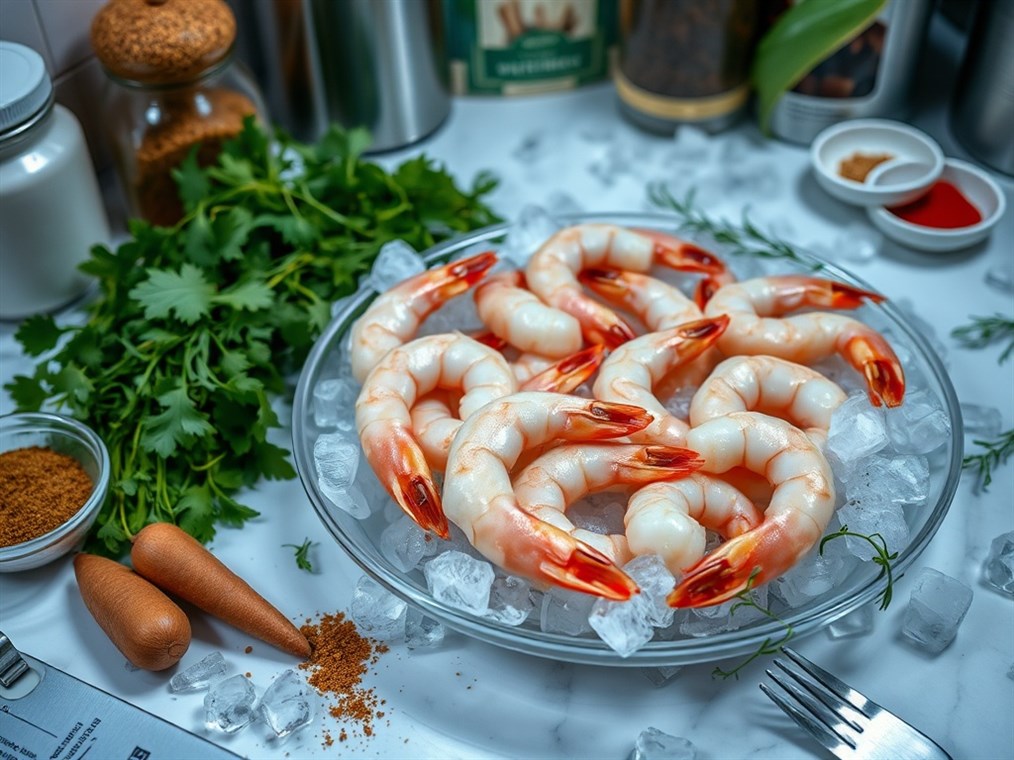How Much Does That Bag of Frozen Shrimp Really Cost? Let’s Dive In.
Frozen shrimp: it’s a weeknight dinner savior, a party appetizer superstar, and just plain delicious. But have you ever stopped to think about what you’re actually paying for when you grab that bag from the freezer aisle? It’s more than just the shrimp itself, trust me.
The global frozen shrimp market is HUGE. We’re talking a $23 billion industry in 2023, and it’s predicted to more than double by 2033! That’s a lot of shrimp cocktails. This boom is all thanks to our busy lives – we want convenient food, and shrimp delivers. Plus, it’s a great source of protein, so win-win, right?
Well, hold on a sec. Lately, the shrimp market’s been a bit of a rollercoaster. We’re seeing price swings thanks to a few things: too much shrimp being produced, changes in how much people are buying, and even shifts in trade rules. In fact, get this: shrimp was a big reason why frozen seafood prices dropped a bit in stores back in April 2024. Go figure!
So, what’s the damage? How much are we really shelling out for this frozen goodness? It’s tough to give you one perfect number, because, well, it depends! But here’s a general idea of what you can expect:
- Tiny Shrimp (the kind you might use in pasta): Around $6 and a quarter per pound.
- “Regular” Raw Shrimp: You’ll probably see prices starting around $6 per pound in your local grocery store.
- Pre-Cooked, Tail-Off Shrimp (perfect for salads!): Expect to pay somewhere between $7 and $9 per pound.
- Jumbo Shrimp (impress your guests!): These can be pricey, ranging from $20 to almost $25 a pound, or even higher if shrimp is scarce. I’ve seen them creep up to $30!
- Wholesale (if you’re feeding an army): Prices can vary wildly, from around $4 to almost $17 per pound.
Keep in mind, these are just ballpark figures. The actual price depends on where you’re shopping, where you live, and what kind of shrimp you’re after.
Okay, so what makes the price jump around so much? Let’s break it down:
- Size Matters: You’ll see shrimp labeled with numbers like “31/40.” That just means you’ll get 31 to 40 shrimp in a pound. The smaller the shrimp (higher the number), the cheaper it usually is.
- Shrimp Personalities:
- Vannamei (Whiteleg Shrimp): These are the workhorses of the shrimp world, often farmed and imported. Sometimes, there are even arguments about them being sold too cheaply, which can mess with prices here at home.
- Black Tiger Shrimp: These guys are often wild-caught, which usually means they’ll cost you more.
- Gulf Shrimp: If you want the good stuff – known for being high-quality and sustainable – look for Gulf shrimp. Be prepared to pay a bit extra, though.
- Where in the World?: Shrimp from different countries can have different price tags. It all comes down to how much it costs to raise or catch them, and what kind of trade deals are in place. Ecuador and India are big players in the shrimp game, so if something happens there, it can affect prices everywhere.
- Wild or Farmed?: Some folks swear wild-caught shrimp tastes better and is better for the environment. But, our wild shrimp industry here in the U.S. is struggling to compete with cheaper farmed shrimp from overseas.
- How Much Work Do You Want To Do?:
- Head-on, Shell-on (HOSO): This is as close to “natural” as you’ll get in the freezer aisle. Usually the cheapest option.
- Peeled and Deveined (P&D): Someone else did the dirty work! Expect to pay more for the convenience.
- Cooked vs. Raw: Cooking costs money, so cooked shrimp will always be pricier.
- Flash Freezing Magic: Fancy freezing methods like IQF (Individual Quick Freezing) help keep the shrimp tasting fresh. This tech can nudge the price up a bit.
- Good Karma Shrimp: Shrimp with labels like MSC or ASC are certified sustainable. These certifications cost money, so you’ll likely see a slightly higher price. But hey, you can feel good about your choice!
- The Economy, Stupid!: Supply and demand, how the economy’s doing, even exchange rates – they all play a role in what you pay at the checkout.
- The Ice Age: That shiny coating of ice on frozen shrimp? That’s called glazing. Too much glazing, and you’re basically paying for ice!
Speaking of feeling good, let’s talk about the environment.
More and more of us are thinking about where our food comes from, and shrimp is no exception. Some shrimp farming and fishing methods can be pretty rough on the environment. Things like dragging nets across the ocean floor can damage habitats, and some shrimp farms have had issues with pollution and treating workers fairly. Look for those sustainability certifications – they’re a good sign that the shrimp was raised or caught responsibly. It might cost a little more, but it’s worth it.
So, what’s next for the world of frozen shrimp?
- Easy Peasy: We want food that’s ready to go, so expect to see more pre-seasoned and ready-to-cook shrimp options.
- Click to Buy: Online shopping is changing everything, and shrimp is no exception. More choices, delivered to your door!
- Green Shrimp: Organic and sustainable is the future.
- Bumpy Ride: Expect prices to keep bouncing around for a while.
Bottom line? The price of frozen shrimp is a puzzle with lots of pieces. Knowing what those pieces are – from the size of the shrimp to where it came from – helps you make smart choices. Keep an eye on the market, look for those sustainability labels, and happy shrimping!

